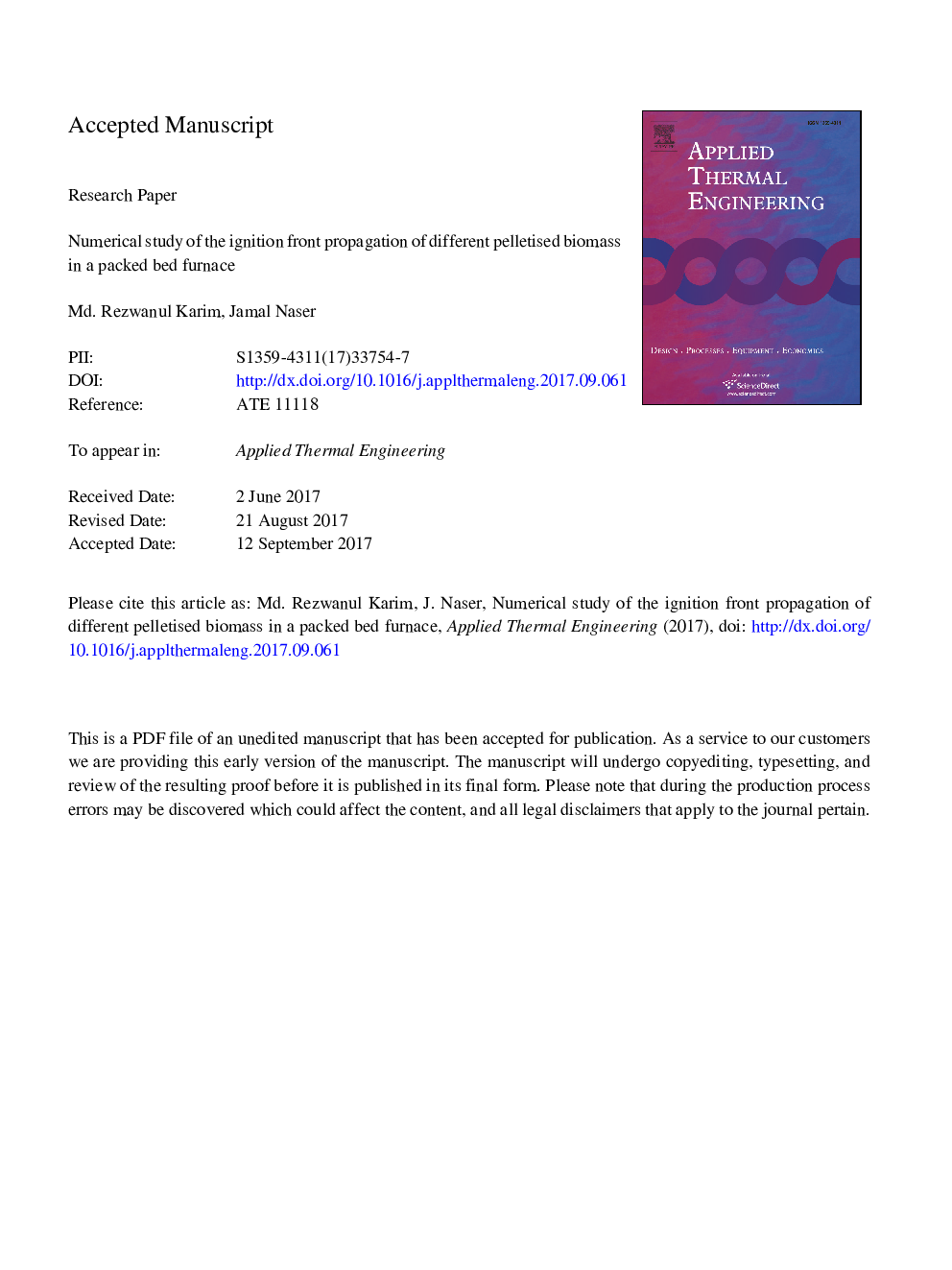| Article ID | Journal | Published Year | Pages | File Type |
|---|---|---|---|---|
| 4990844 | Applied Thermal Engineering | 2018 | 46 Pages |
Abstract
In the current study, a 3D numerical model for biomass combustion in a packed bed furnace has been developed to study combustion of four types of biomass fuels (wood pellet, poplar pellet, olive stone and pine shavings) with different chemical composition and physical properties. A number of sub models representing various processes of the fuel thermal conversion were included through user defined subroutines coupled to commercial CFD software AVL Fire. Ignition front propagation velocity, maximum flow temperature, effect of excess air and moisture content have been studied with the change of air flow rate and compared with an experimental analysis of biomass fixed bed combustor. It is found that, air mass flow greatly affects ignition front velocity and maximum values are achieved under sub-stoichiometric condition. Highest ignition front velocity is achieved by pine shavings due to its smaller particle size and bed solid fraction. The numerical model reasonably predicted ignition front velocity in the oxygen-limited regime. In the reaction limited regime, simulation slightly over estimates the ignition front velocities except for the fuel pine shavings, but it followed the measured trend. Beyond the reaction limited regime, further increase in air mass flow forces combustion to extinguish due to increased convection cooling and a downward trend of the ignition front velocity is observed. Reason for the over predictions in reaction limited and cooling by convection regimes for the larger diameter fuels is explained.
Related Topics
Physical Sciences and Engineering
Chemical Engineering
Fluid Flow and Transfer Processes
Authors
Md. Rezwanul Karim, Jamal Naser,
